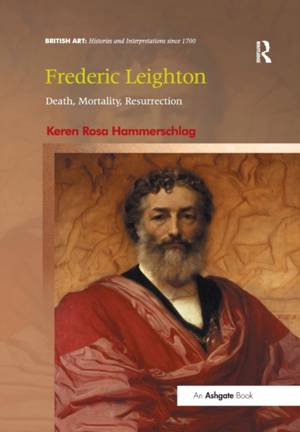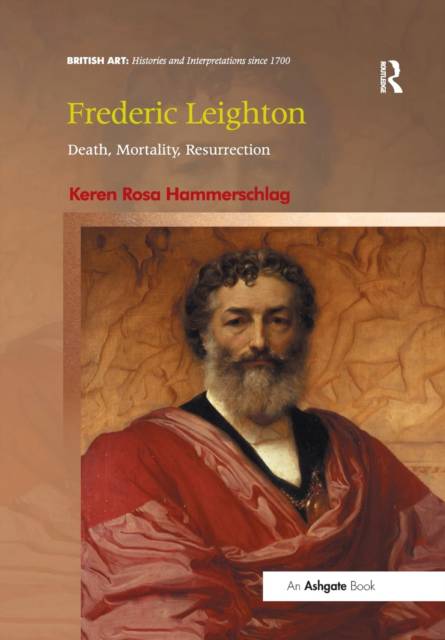
Door een staking bij bpost kan je online bestelling op dit moment iets langer onderweg zijn dan voorzien. Dringend iets nodig? Onze winkels ontvangen jou met open armen!
- Afhalen na 1 uur in een winkel met voorraad
- Gratis thuislevering in België vanaf € 30
- Ruim aanbod met 7 miljoen producten
Door een staking bij bpost kan je online bestelling op dit moment iets langer onderweg zijn dan voorzien. Dringend iets nodig? Onze winkels ontvangen jou met open armen!
- Afhalen na 1 uur in een winkel met voorraad
- Gratis thuislevering in België vanaf € 30
- Ruim aanbod met 7 miljoen producten
Zoeken
Omschrijving
Keren Rosa Hammerschlag's Frederic Leighton: Death, Mortality, Resurrection offers a timely reexamination of the art of the late Victorian period's most institutionally powerful artist, Frederic Lord Leighton (1830-1896). As President of the Royal Academy from 1878 to 1896, Leighton was committed to the pursuit of beauty in art through the depiction of classical subjects, executed according to an academic working-method. But as this book reveals, Leighton's art and discourse were beset by the realisation that academic art would likely die with him. Rather than achieving classical perfection, Hammerschlag argues, Leighton's figures hover in transitional states between realism and idealism, flesh and marble, life and death, as gothic distortions of the classical ideal. The author undertakes close readings of key paintings, sculptures, frescos and drawings in Leighton's oeuvre, and situates them in the context of contemporaneous debates about death and resurrection in theology, archaeology and medicine. The outcome is a pleasurably macabre counter-biography that reconfigures what it meant to be not just a late-Victorian neoclassicist and royal academician, but President of the Victorian Royal Academy.
Specificaties
Betrokkenen
- Auteur(s):
- Uitgeverij:
Inhoud
- Aantal bladzijden:
- 258
- Taal:
- Engels
- Reeks:
Eigenschappen
- Productcode (EAN):
- 9781138548350
- Verschijningsdatum:
- 12/02/2018
- Uitvoering:
- Paperback
- Formaat:
- Trade paperback (VS)
- Afmetingen:
- 170 mm x 244 mm
- Gewicht:
- 426 g

Alleen bij Standaard Boekhandel
+ 195 punten op je klantenkaart van Standaard Boekhandel
Beoordelingen
We publiceren alleen reviews die voldoen aan de voorwaarden voor reviews. Bekijk onze voorwaarden voor reviews.











